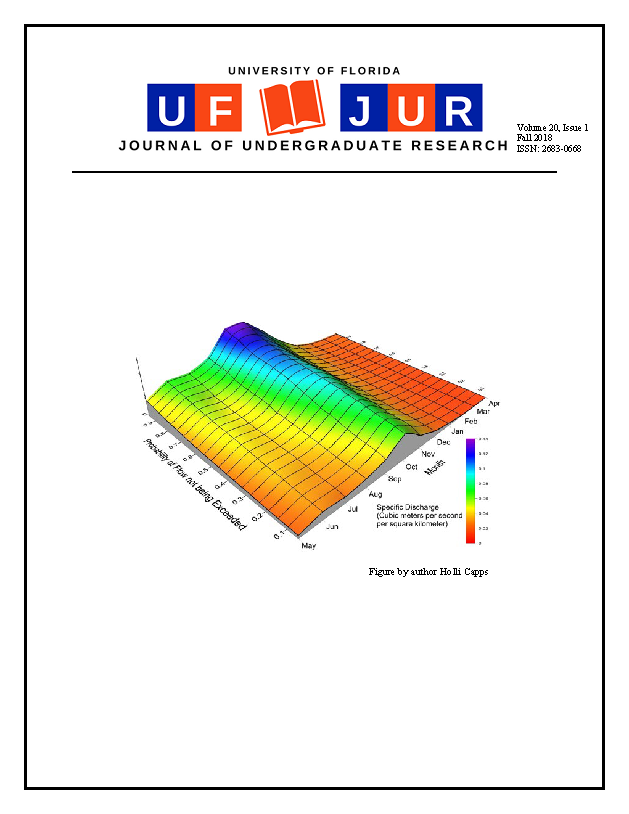Network Approaches to Analyze the Dynamics of Financial Markets
DOI:
https://doi.org/10.32473/ufjur.v20i1.106251Keywords:
undergraduate researchAbstract
Analyzing financial markets requires gathering large amounts of data and determining appropriate methods so that accurate and appropriate conclusions can be drawn. The purpose of this paper is to investigate network approaches to understand large amounts of financial data and the implications of different approaches. Creating a market graph has been used to analyze financial instruments, and prices fluctuations of stocks over a large time period. A market graph is constructed with nodes and edges; nodes represent the quantity of interest, or specific data points, such as stock prices at an instance of time. Edges represent a relationship between one node and another. Creating edges can be accomplished through many different approaches including correlation coefficients, power law, and minimum spanning tree. Pearson’s correlation coefficient can be used to relate a set of two data points and can be further filtered through a minimum threshold value. The power law graph is another unique way to relate data points to one another. The power law graph creates edges among nodes by considering a probability and the binomial distribution. The power law graph has powerful implications on network analysis because it concludes that the degree distribution, the number of connections a node has to other nodes, is represented as an exponential relationship. A minimum spanning tree is a hierarchical method used to analyze market graphs. A minimum spanning tree clusters data by partitioning data appropriately. Overall, many methods are defined to establish a market graph depending on the purpose of the analysis and the parameter of interest.
Metrics
References
Battiston, S., Glattfelder, J., Garlaschelli, D. and Caldarelli, G. (n.d.). The Structure of Financial Networks. [Online] Available at: https://www.sg.ethz.ch/media/publication_files/chp3A10.10072F978-1-84996-396-1_7.pdf.
V. Boginski, S. Butenko, and P. M. Pardalos. Statistical analysis of financial networks. Computational statistics & data analysis, 48(2):431–443, 2005.
K. Sorensen and P. Pardalos, "Clustering in Financial Markets."
C.-X. Nie, “Correlation dimension of financial market,” Physica A: Statistical Mechanics and its Applications”, vol. 473, pp. 632–639, May 2017.
G. Marti, F. Nielsen, M. Bińkowski, and P. Donnat, “A review of two decades of correlations, hierarchies, networks and clustering in financial markets.”
A. V. Aho, J. E. Hopcroft, and J. D. Ullman. Data Structures and Algorithms. Pearson, 1st edition, 1983.
N. Huang, L. Leo Keselman, and V. Vincent Sitzmann, “Beyond correlation networks.”
Bomze 1999 I.M. Bomze, M. Budinich, P.M. Pardalos, M. Pelillo. The maximum clique problem D.-Z. Du, P.M. Pardalos (Eds.), Handbook of Combinatorial Optimization, Kluwer Academic Publishers, Dordrecht (1999), pp. 1-74
Downloads
Published
Issue
Section
License
Some journals stipulate that submitted articles cannot be under consideration for publication or published in another journal. The student-author and mentor have the option of determining which journal the paper will be submitted to first. UF JUR accepts papers that have been published in other journals or might be published in the future. It is the responsibility of the student-author and mentor to determine whether another journal will accept a paper that has been published in UF JUR.

